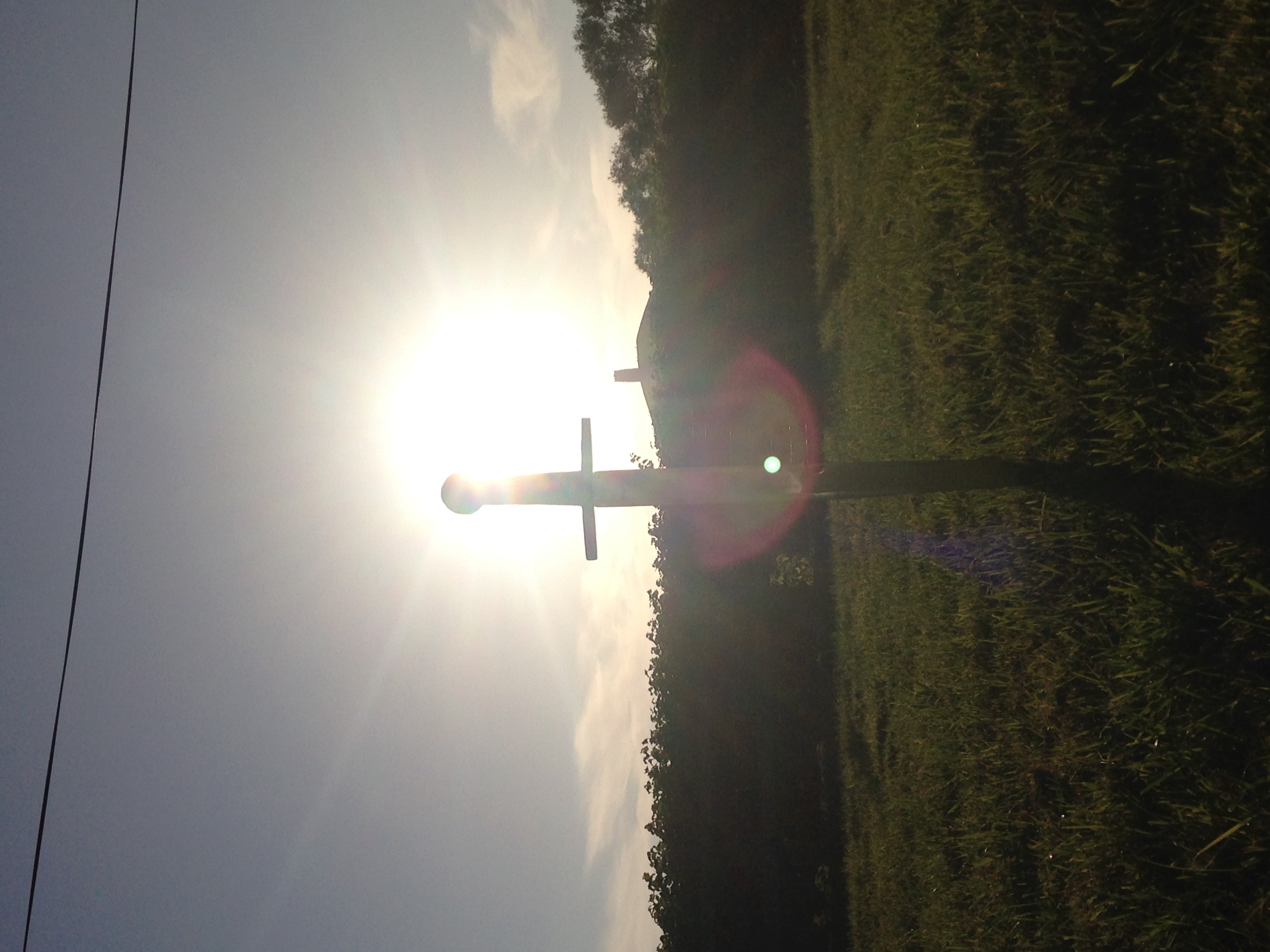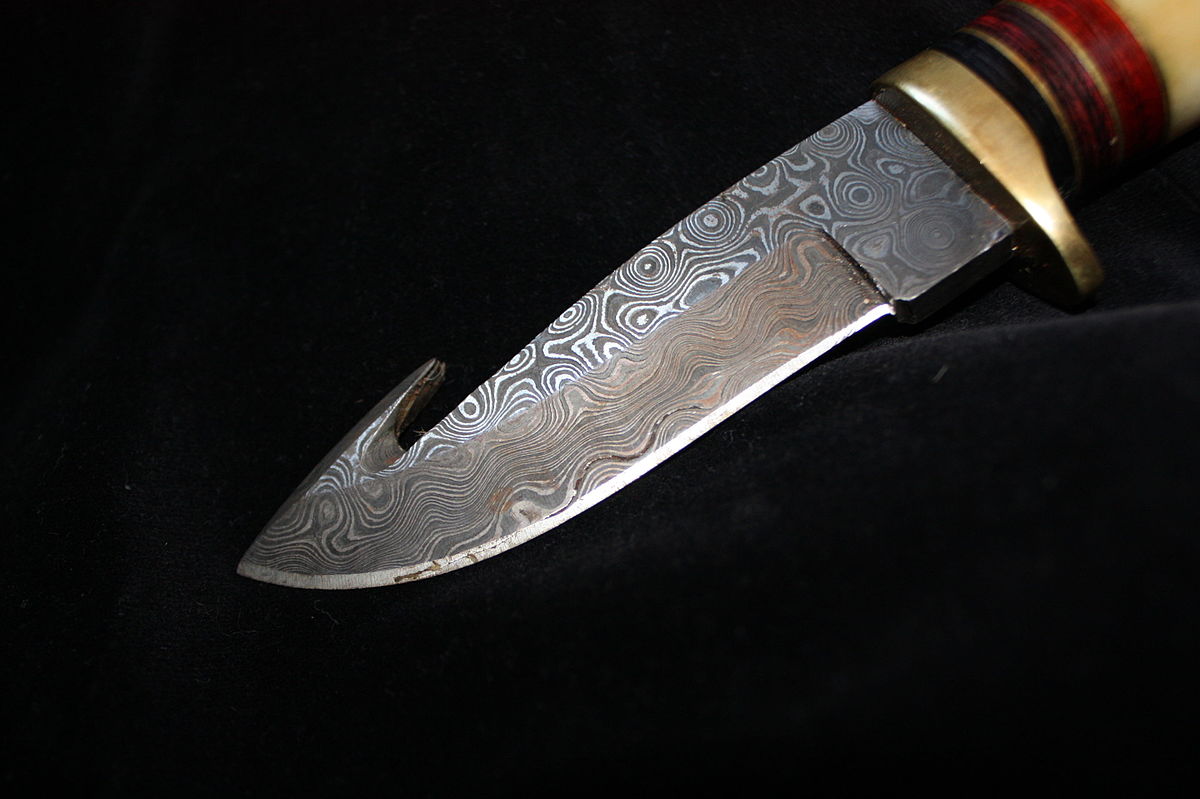Difference between revisions of "The Art of Sword Forging"
From Londonhua WIKI
(→Blade Patterns) |
(→Section 2: Deliverable) |
||
| Line 49: | Line 49: | ||
<br> | <br> | ||
[[File: ProjectPicture.jpg|x320px|right|thumb| Additional Image]]<br> | [[File: ProjectPicture.jpg|x320px|right|thumb| Additional Image]]<br> | ||
| − | + | For the Deliverable, I created a medievl sword. Since creating art on a sword takes a more skilled blacksmith I decided to simple forge a sword to get an idea of how difficult creating the art along with the sword must have been. | |
<br><br> | <br><br> | ||
==Process of sword forging== | ==Process of sword forging== | ||
Revision as of 07:46, 22 June 2017
Art in Sword Forging
 Deliverable Sword by Tower Hill |
__TOC__.
Contents
[hide]Abstract
The paragraph should give a three to five sentence abstract about your entire London HUA experience including 1) a summary of the aims of your project, 2) your prior experience with humanities and arts courses and disciplines, and 3) your major takeaways from the experience. This can and should be very similar to the paragraph you use to summarize this milestone on your Profile Page. It should contain your main Objective, so be sure to clearly state a one-sentence statement that summarizes your main objective for this milestone such as "a comparison of the text of Medieval English choral music to that of the Baroque" or it may be a question such as "to what extent did religion influence Christopher Wren's sense of design?"
Introduction
I suggest you save this section for last. Describe the essence of this project. Cover what the project is and who cares in the first two sentences. Then cover what others have done like it, how your project is different. Discuss the extent to which your strategy for completing this project was new to you, or an extension of previous HUA experiences.
As you continue to think about your project milestones, reread the "Goals" narrative on defining project milestones from the HU2900 syllabus. Remember: the idea is to have equip your milestone with a really solid background and then some sort of "thing that you do". You'll need to add in some narrative to describe why you did the "thing that you did", which you'd probably want to do anyway. You can make it easy for your advisors to give you a high grade by ensuring that your project milestone work reflects careful, considerate, and comprehensive thought and effort in terms of your background review, and insightful, cumulative, and methodical approaches toward the creative components of your project milestone deliverables.
Section 1: Background
Meaning of Art in Swords
Blade Patterns

Damascus steel swords were very popular during the medieval period due to there combination of strength and flexibility. Using Damascus steel causes a water ripple looking pattern in the blade. For this reason many smiths found ways to copy the pattern despite not having the steel. The patterning was entirely for aesthetic uses and had no real meaning beyond the implication that it was a high quality sword which may or may not have been true depending on whether or not it was Damascus steel and if it was forged properly.[1]
Inscriptions
Inscriptions on Medieval swords are very common and severed a variety of purposes. There are four kinds of inscriptions that are found on medieval swords, runic inscriptions, symbols, religious vocations, and periodic sequences.[2] Runic inscriptions were frequently maker's marks, which show who forged the sword, but also could have been the names of the owners, makers (their name being different form their mark), donators, carriers or the weapons name. They could have also been to remind the barer to show bravery or been written by sorceresses to give the blade magic power.[3][4] Religious vocations would have been meant to give the wielders divine favor in battle.[5] Symbols and ornaments were likely religious.[6] Most writing on medieval swords have religious, magical, or other protective meaning.[7][8] Among more common letter sequences such as SDX, which means Sanctus Dominus Christus or Holy Lord Christ, SD(I)X, which could have meant salvator Dominus Iesus Xrist or Liberator Lord Jesus Christ, and ULFBERTH which were mass produced. There are different sequences that do not appear to have any meaning.[9] This could be because hey are Latin abbreviations of songs or verse that are unknown or due to a lack of understanding the grammar. Because witting was very uncommon at the time, any kind of lettering would have a magical connotation. Some of the inscriptions could have been nonsense meant to be a magical language.[10]
Making The Art
Blade Patterns
There are multiple ways of creating patterns on a blade. One method would be to weld two pattern sheets of steel together. This could be done with or without a sheet of iron in the middle depending on the forge.[11] Other methods include the use of Damascus steel and pattern welding. The Original method for creating Damascus steel was lost sometime in 1750. There have been some attempts to replicate it but non have been entirely successful.[12] The loss could have been from a lack of Wootz, the ore used to make the sword and found only in India, or a change in technique in an attempt to keep up with high demands. Pattern welding requires stacking alternating layers of iron or low carbon steel and high carbon steel or alternating steels of different grain size. The sheets are then curryed, or welded together. They can then be folded bent and twisted during forging to create different patterns.[13]
Inscriptions
Inlays were made by Carving out the desired design in the blade with a chisel. Gold or other metal thread was place over the carvings then hammered in. It was hammered in using a lager flat hammer that would be place on the sword then hit with a more standard hammer.[14]
Section 2: Deliverable
For the Deliverable, I created a medievl sword. Since creating art on a sword takes a more skilled blacksmith I decided to simple forge a sword to get an idea of how difficult creating the art along with the sword must have been.
Process of sword forging
Where all the materials cam from, where it was done etc. Also how the process varies from the one in the background
Results
Probably a gallery with pictures and some commentary on the final sword
Gallery
Conclusion
In this section, provide a summary or recap of your work, as well as potential areas of further inquiry (for yourself, future students, or other researchers).
References
Add a references section; consult the Help page for details about inserting citations in this page.
External Links
If appropriate, add an external links section
Image Gallery
If appropriate, add an image gallery
- Jump up ↑ Durand-Charre, M. (2014). Damascus and pattern-welded steels forging blades since the iron age. Les Ulis (Essonne): EDP sciences.
- Jump up ↑ Worley, J., Wagner, T. (2013) How to make swords talk: an interdisciplinary approach to understanding medieval swords and their inscriptions. Waffen- und Kostümkunde, 55(2): 113-132
- Jump up ↑ Worley, J., Wagner, T. (2013) How to make swords talk: an interdisciplinary approach to understanding medieval swords and their inscriptions. Waffen- und Kostümkunde, 55(2): 113-132
- Jump up ↑ Nickel, H. (1969). A Knightly Sword with Presentation Inscriptions. Metropolitan Museum Journal, 2, 209-210. doi:10.2307/1512593
- Jump up ↑ Nickel, H. (1969). A Knightly Sword with Presentation Inscriptions. Metropolitan Museum Journal, 2, 209-210. doi:10.2307/1512593
- Jump up ↑ Worley, J., Wagner, T. (2013) How to make swords talk: an interdisciplinary approach to understanding medieval swords and their inscriptions. Waffen- und Kostümkunde, 55(2): 113-132
- Jump up ↑ Worley, J., Wagner, T. (2013) How to make swords talk: an interdisciplinary approach to understanding medieval swords and their inscriptions. Waffen- und Kostümkunde, 55(2): 113-132
- Jump up ↑ Nickel, H. (1969). A Knightly Sword with Presentation Inscriptions. Metropolitan Museum Journal, 2, 209-210. doi:10.2307/1512593
- Jump up ↑ Worley, J., Wagner, T. (2013) How to make swords talk: an interdisciplinary approach to understanding medieval swords and their inscriptions. Waffen- und Kostümkunde, 55(2): 113-132
- Jump up ↑ Worley, J., Wagner, T. (2013) How to make swords talk: an interdisciplinary approach to understanding medieval swords andtheir inscriptions. Waffen- und Kostümkunde, 55(2): 113-132
- Jump up ↑ Durand-Charre, M. (2014). Damascus and pattern-welded steels forging blades since the iron age. Les Ulis (Essonne): EDP sciences.
- Jump up ↑ Durand-Charre, M. (2014). Damascus and pattern-welded steels forging blades since the iron age. Les Ulis (Essonne): EDP sciences.
- Jump up ↑ Durand-Charre, M. (2014). Damascus and pattern-welded steels forging blades since the iron age. Les Ulis (Essonne): EDP sciences.
- Jump up ↑ Durand-Charre, M. (2014). Damascus and pattern-welded steels forging blades since the iron age. Les Ulis (Essonne): EDP sciences.



